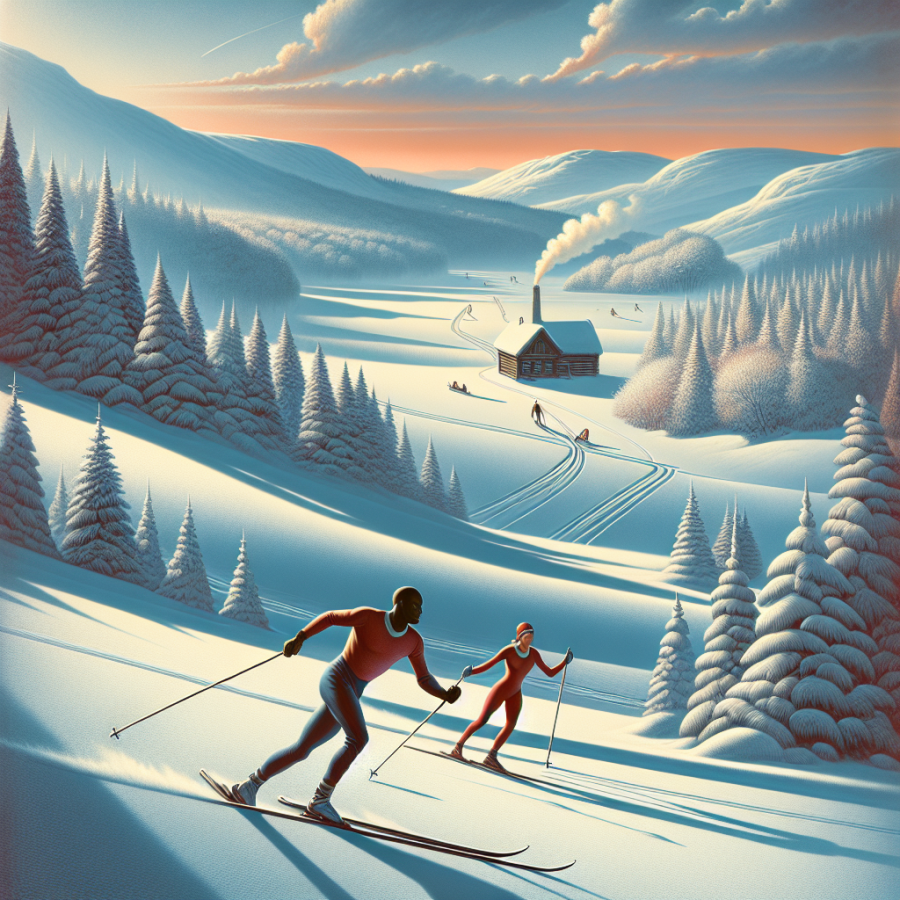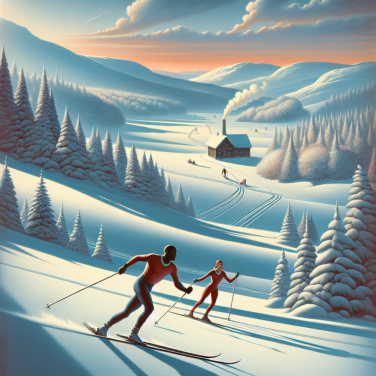Navigating the Winter Wonderland: The Joys of Nordic Skiing
Nordic skiing, also known as cross-country skiing, is far more than a mere winter pastime; it's an exhilarating adventure that combines physical endurance with the serene beauty of snow-covered landscapes. The sport's origins are deeply embedded in the snowy climes of Scandinavia, where it remains a cornerstone of winter culture. Today, enthusiasts from all corners of the world celebrate the joys of gliding across frosty trails, undeterred by the chill of winter air.
Embarking on a Nordic skiing journey allows adventurers to fully immerse themselves in the tranquility of the natural world. Unlike the swift descents characteristic of downhill skiing, Nordic skiing emphasizes a harmonious balance between the skier and the environment, promoting a peaceful co-existence with nature. The rhythmic motion of the skis and poles, synchronized with the skier's breath, can transform the activity into a form of moving meditation, captivating both the body and the mind.
The equipment for Nordic skiing is specialized to facilitate this unique form of travel across snow. Skis are typically longer and narrower than those used for alpine skiing, enhancing glide and efficiency. Boots are designed to provide comfort and warmth without sacrificing the flexibility needed for the classic kick-and-glide technique or the dynamic movements of skate skiing. The selection of poles is equally important, as they serve as an extension of the skier's arms, propelling them forward with each stride.
One of the greatest joys of Nordic skiing is the accessibility it offers to nature's most secluded spots. Forest trails and open meadows become a playground for the intrepid explorer. The low-impact nature of the sport means that skiers can venture far into the wilderness without causing significant disturbance to wildlife or the ecosystem. This respect for the environment is a cornerstone of the Nordic skiing community, fostering a sense of stewardship among its participants.
The sport also serves as a remarkable way to maintain fitness during the colder months. Engaging nearly every muscle group, Nordic skiing provides a comprehensive cardiovascular workout that challenges the heart and lungs. The resistance encountered when pushing through snow offers a natural strength-training element, building endurance and muscle tone. Moreover, the balance and coordination required to navigate varying terrains promote agility and core stability. As a winter exercise, few activities are as holistic and rewarding as Nordic skiing.
Beyond the physical benefits, Nordic skiing is a conduit to community and culture.
Read also:
Mastering the Court: Essential Racquetball Strategies
Mastering the Trails: Techniques and Tips for Exhilarating Nordic Skiing Excursions
Embarking on Nordic skiing adventures offers a captivating blend of exhilarating exercise, breathtaking scenery, and the joy of gliding over snow-covered landscapes. To truly master the trails and elevate your excursions, there are several techniques and tips that can enhance your experience and improve your performance.
**Proper Preparation** is key in Nordic skiing. Before setting out, ensure that you have all the necessary gear, including skis, boots, poles, and appropriate clothing. Familiarize yourself with different waxing techniques to suit the prevailing snow conditions. A well-waxed ski can make a significant difference in gliding efficiency and control.
**Classic vs. Skate Skiing Techniques**: Understanding the difference between these two main styles of Nordic skiing will help you choose which suits your preference. Classic skiing involves a straight-line motion in pre-set tracks, best for beginners and those who enjoy a rhythmic pace. Skate skiing, on the other hand, resembles ice-skating and allows for faster speeds and a more intense workout. Both styles require good balance and coordination, but emphasize different muscle groups.
**Improving Your Balance and Coordination** is essential for an efficient and smooth Nordic skiing experience. Start with simple drills on flat terrain. Practice gliding on one ski to feel the balance point. Train your body to shift weight effortlessly from one ski to the other. Incorporating balance exercises, such as single-leg stands and core workouts, into your fitness regime can greatly benefit your skiing.
**Pole Usage** plays a critical role in propulsion and rhythm in Nordic skiing. For classic skiing, ensure your poles are long enough to reach the ground while your arm is at a 90-degree angle. In skate skiing, poles should be longer to provide better leverage. Focus on planting your poles firmly into the snow and driving them back to propel yourself forward.
**Developing Efficient Striding Techniques** can conserve energy and maintain consistent speed. Practice engaging your core and using your leg muscles to push off. Remember to glide and transfer your weight smoothly from one ski to the other. This will help you achieve a fluid motion and reduce fatigue.
**Downhill Control** is a thrill but can be daunting. Learning how to navigate declines safely is crucial. Practice snowplowing and step turns on gentle slopes before advancing to steeper terrain. Always keep your knees slightly bent for better control and be prepared to adjust your stance depending on the steepness of the hill.




